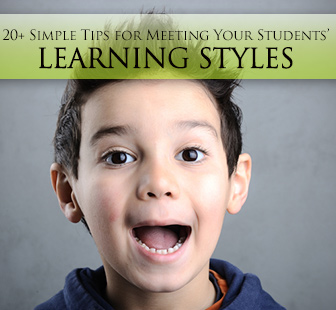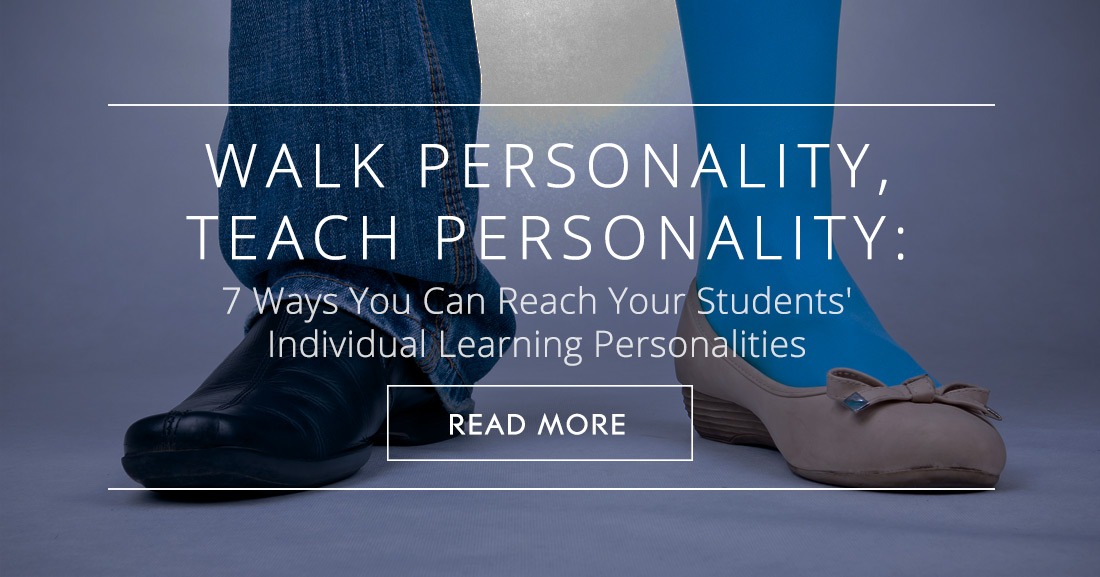20+ Simple Tips for Meeting Your Studentsí Learning Styles


I used to think that if I pushed my students really hard, if I was tough on them, they would learn better, faster, and more.
I used to think that if I pushed my students really hard, if I was tough on them, they would learn better, faster, and more. I’m ashamed it took me longer to realize I was wrong than was good for me or my students. But what I learned the hard way was this: you can’t make someone learn something they don’t want to learn. Students need to take the initiative in their own education no matter what subject it is. But that’s not the end of the story.
It’s not to say that as teachers we can’t do anything to help our students succeed. Though the ultimate decision to learn does belong to our students, we can do a lot to set them up for success in our classes. One key to helping our students succeed is helping them integrate English with the natural ways they learn. By stylizing our activities and lessons in a way that naturally connects with them. By playing to their learning personalities. Howard Gardner called these learning personalities multiple intelligences, and he identified seven of them. It is possible to reach all of your students by keeping these seven intelligence styles in mind when you plan activities. Here’s how.
One of Gardner’s multiple intelligences is linguistic, that is having to do with words. Some might call this verbal intelligence or an aural learning style. Without even trying, ESL teachers have linguistic activities all the time. It’s what we do. Teach language. We start with words and hope our students achieve understanding. Sometimes we start with their native language and connect it to English. Other ways to reach this intelligence personality are having students read a story and then retell the story or write a summary or a reaction to set a linguistic minded student up for success. Starting with words on the page and moving toward different words on a different page. Guaranteed, students who learn this way will excel at learning English.
I think every teacher knows what a kinesthetic learner is, one who learns best when their bodies are involved in the process. Some refer to this as bodily learning. There are lots of ways to get your students’ muscles moving while they learn. And it won’t only benefit kinesthetic students when you do. Studies show involving movement with language learning actually eases the process. One way to do this might be to read your students a story and have them act it out while you read. It’s a load of fun and focuses on listening comprehension. Try Max Lucado’s You Are Special if you want to give this technique a try. And of course the great standby – Total Physical Response. It’s a great instructional technique especially if you are teaching beginning level students.
You’re probably heard of visual learners since it’s also one of the big three along with kinesthetic and aural. They learn best what they can see with their own eyes. For these learners, try starting with a picture and moving toward language from there. You might have one student describe a picture to another, have two students talk about two pictures to find similarities and differences between them, or even give students a three frame comic and ask them to use it to write a three paragraph story, describing what happens in each pane in their paragraphs.
Some students learn with music. Including music in the classroom is a technique that words from the youngest of children to the oldest of adults, but it’s especially valuable to your musical learners. To give them an academic boost, try playing music in the background during class (try to avoid music with lyrics) while they write, work independently, or take a test. You might want to play some music to set the tone for a roleplay or while students write a story. Try some mood music for a restaurant role play or musak for a business role play. You can also have students sing songs that incorporate target vocabulary or explain grammatical concepts. You can make up your own songs very easily by taking a familiar tune (such as Twinkle, Twinkle Little Star or Row, Row, Row Your Boat) and putting your own words to it.
Some students work best on their own. These are independent, solitary, or intrapersonal learners if you prefer that term. You can make your lessons very personal for those students by asking them to start with something they have experienced and share it in English. You might have them write a journal entry, talk about a time they were scared or proud of themselves, or have them start with a personal experience and find related vocabulary. Any time you can bring personal experiences or feelings into your activities, you will be reaching your intrapersonal or solitary learners.
Other students in your class will learn best when the activities involve other people. Since language is communicative and our goal as teachers is to have students speaking as much as possible, interpersonal learners often do well in language classes without much effort on your part to include social activities. But you can also make a point of setting these students up or success by asking groups of student to perform a task such as tell a story, write a skit, or solve a problem. Try taking a traditionally independent assignment, such as answering questions in a book, and making it interpersonal by letting only one person look in the book but have both work together to come up with the answers.
A final type of learners you might have in your class are logical or mathematical learners. You might see them excelling at grammar since they learn well through puzzles and logic. You can give them problems to solve to engage them in language learning and help them excel. Try the discovery grammar instructional method or give them a writing challenge with Rory’s story dice. To play, students roll six dice that have pictures rather than numbers on them. Ask students to tell a story that somehow connects all six pictures in a logical whole. You don’t have to have the dice to do a similar activity, though. Put together a collection of pictures of random items and have students select six and put them into a story together either in writing or orally. They’ll have to use the logical part of their brains to make sure everything connects in a way that makes sense.